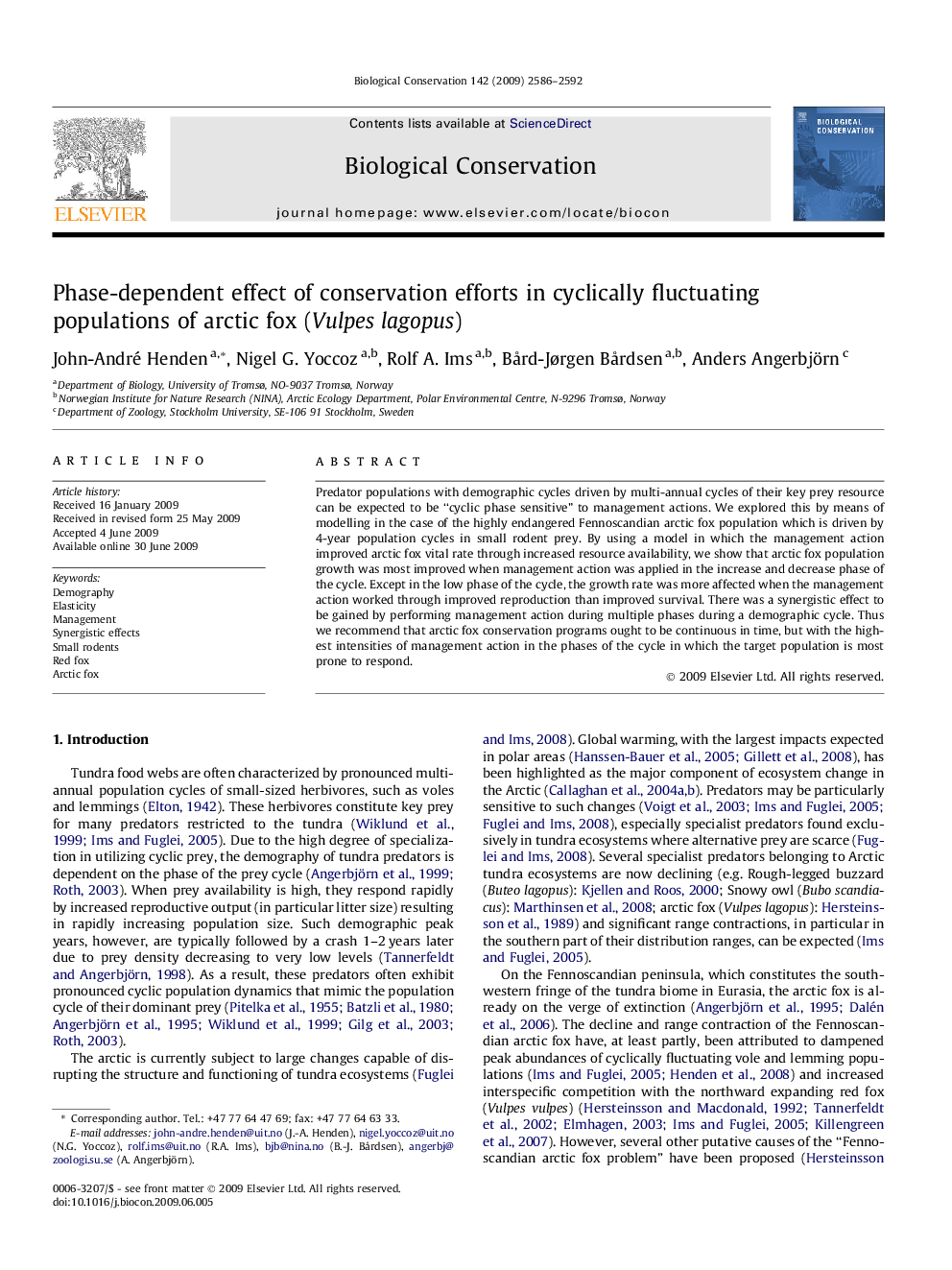| Article ID | Journal | Published Year | Pages | File Type |
|---|---|---|---|---|
| 4385861 | Biological Conservation | 2009 | 7 Pages |
Predator populations with demographic cycles driven by multi-annual cycles of their key prey resource can be expected to be “cyclic phase sensitive” to management actions. We explored this by means of modelling in the case of the highly endangered Fennoscandian arctic fox population which is driven by 4-year population cycles in small rodent prey. By using a model in which the management action improved arctic fox vital rate through increased resource availability, we show that arctic fox population growth was most improved when management action was applied in the increase and decrease phase of the cycle. Except in the low phase of the cycle, the growth rate was more affected when the management action worked through improved reproduction than improved survival. There was a synergistic effect to be gained by performing management action during multiple phases during a demographic cycle. Thus we recommend that arctic fox conservation programs ought to be continuous in time, but with the highest intensities of management action in the phases of the cycle in which the target population is most prone to respond.
